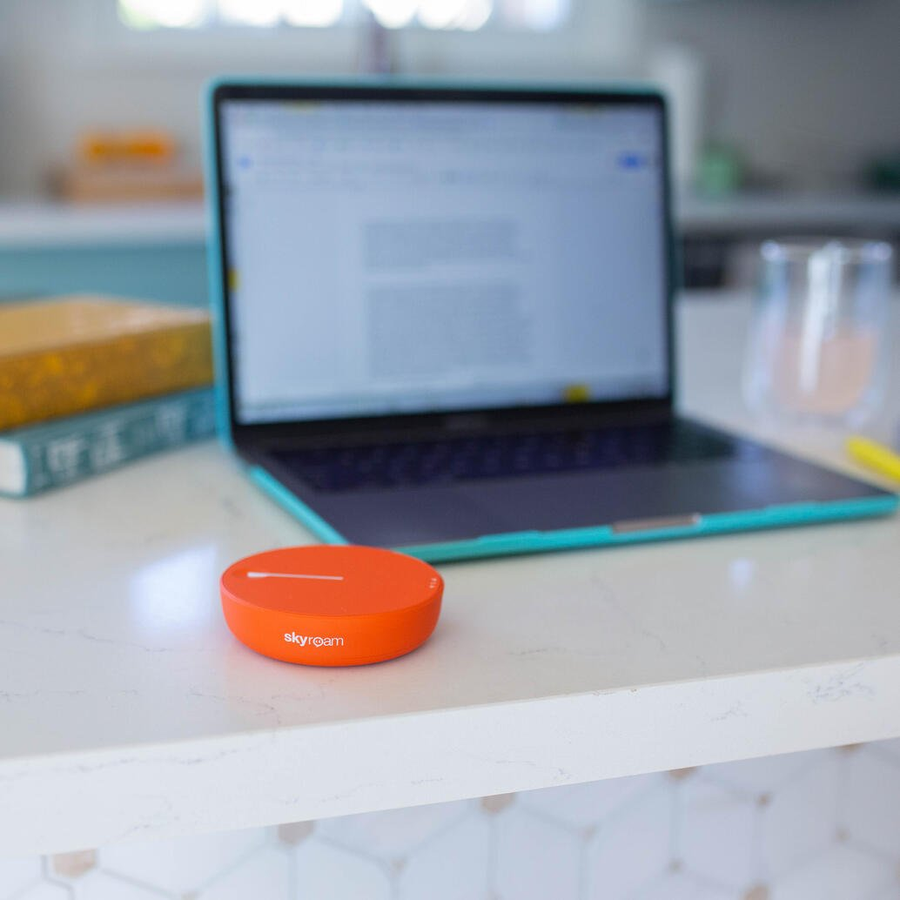
Telecommuting is still on the rise, and it shows no indications of stopping anytime soon. In 2020, 5 million employees worked at least half of their work hours from their homes, which has resulted in 173% growth in the number of telecommuters from 2005 to today.
With the rising wave of telework also comes an increased need for a dedicated working space in your home, which can be a double-edged sword. While you are at liberty to create the ideal workspace that meets your particular demands, it is also up to you (not your employer) to keep this space well-maintained, organized, and optimized for success.

In the modern era of technology, this means dewiring your office—or removing antiquated equipment that hinders your ability to work more than it helps. By untethering yourself from this bulky technology and adopting an improved digital strategy, you’ll ensure that your personal desk is more than ready to accommodate the needs of a modern worker.
Tip #1: Fortify Your Wireless
Before you can unplug anything, you need to make sure that you have the right foundational equipment that enables a wireless approach to work. After all, even the most advanced laptop, tablet, or work phone is no use without a reliable internet connection.
That’s why the very first piece of technology to add to your new wireless toolbox should be a portable and high-speed wireless hotspot. For remote workers, the internet is often the only connection they have between themselves and the rest of the company. A poor wireless setup can jeopardize their ability to communicate, collaborate, and remain visible within the organization. Plus, a work-from-home friendly Wi-Fi system supports remote workers from their home offices as well as during business travel or the occasional coffee-shop workday.
Once you’ve set up a wireless plan that accommodates your work needs—including all the devices you use on any given day—you’re ready to begin dewiring the rest of your workspace.
Tip #2: Take Your Tools to the Internet
These days, if there’s a tool in your office that uses a wired connection to some capacity, there is likely a wireless alternative to replace it. Your large, sedentary desktop can be switched to a home-office-ready laptop without a substantial sacrifice to computing power. Printing towers, which once required a USB connection to your computer, have become an oddity as printers with internet capabilities take their places on desks.
Not only do these new tools remove the clutter and mess of all that extra wiring, but on more occasions than not they also enhance or add to the outdated tool’s capabilities. The most revealing example of this is in communication technology used primarily by telecommuters. Where remote employees may have once been restrained to communicating primarily over an office phone set, tools such as video conferencing allow both verbal and visual communication, which can help you more clearly express your thoughts to your colleagues.
Tip #3: Move to Off-Premise Storage
Even if you’ve recently migrated from paper documentation to electronic filing systems, keeping this information on-premise—be it a local hard drive or on your actual computer—is quickly becoming outdated, especially when working with teams larger than yourself.
Primarily, the move to off-site, internet-based data storage is through cloud computing. The cloud storage market was already valued at $46 Billion in 2019 and is projected to grow to $222 Billion by 2027, demonstrating how essential cloud technology will become to all types of business operations.
There are a few key distinctions between on-premise and cloud storage that make the latter worth the investment. When information is stored on-premise, it becomes your business’ responsibility to manage and secure this data, as well as maintain the hardware where it is stored. Cloud networks, alternatively, store your information on remote servers and are typically managed by your cloud management service provider.
These differences make off-premise storage easier to regularly maintain and upgrade, while at the same time making your documentation infinitely more accessible. This makes cloud computing the ideal solution for the dewired home office, where multiple users can access, edit, and collaborate on the same document over the internet.
From switching to Bluetooth headphones to completing a major overhaul of your office tech, there are so many ways—big and small—to begin dewiring your home office. How have you made the switch to wireless, and how has it altered the way you accomplish your work? Keep the conversation going in the comments section below!

